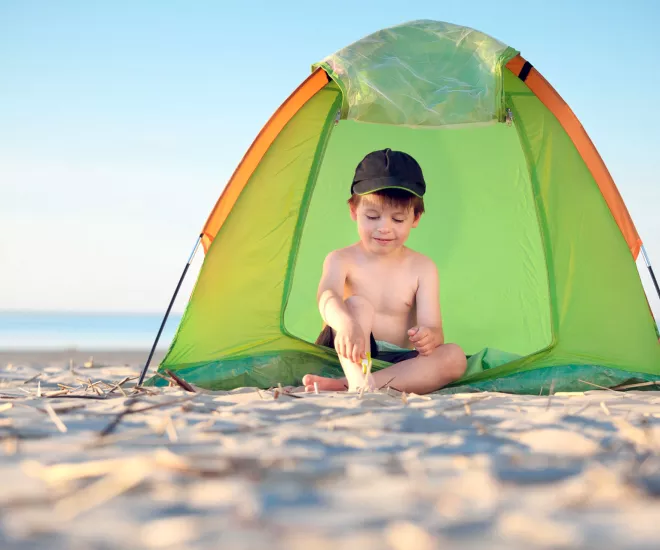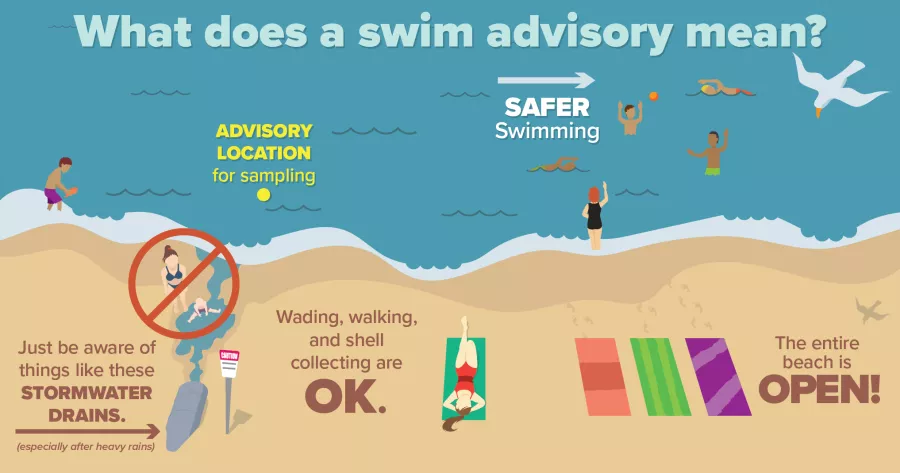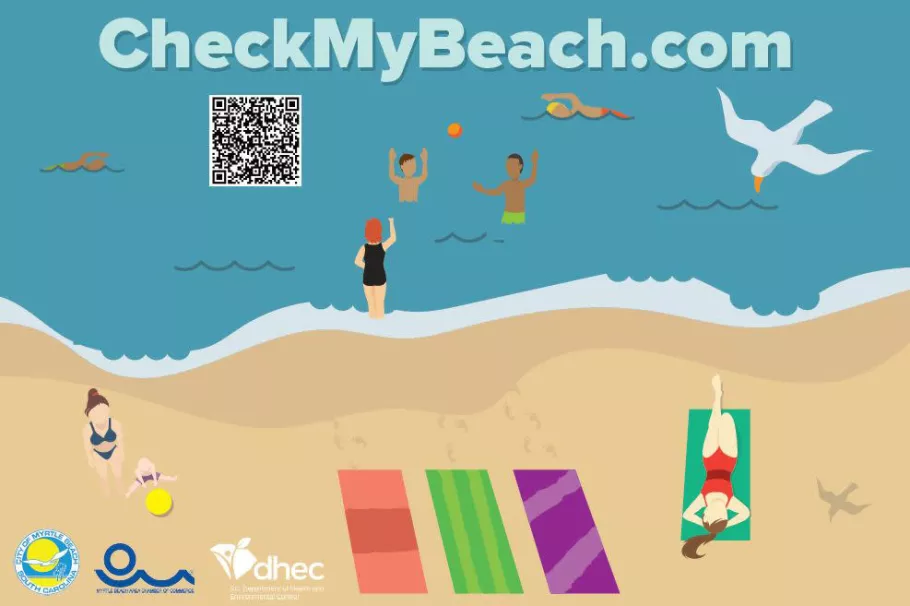Myrtle Beach Area Water Quality & Swim Advisories

Learn More About What It Means. Bottomline: Myrtle Beach Area Beaches Are Safe And Open
The testing of our ocean water is very important and helpful in ensuring the cleanliness of our beaches. However, it can alarm people when there is a higher reading following heavy rainfall. It is true that stormwater runoff can occasionally boost test results and signs will be posted, but it is for limited sites for a limited time. Stormwater drains impact less than 2 percent of area beaches. You can be confident that the Myrtle Beach area's 60 miles of beaches are clean, safe and open for the enjoyment of both our visitors and our residents.

Routine Beach Area Water Quality Testing
Between May 1 and October 1, the South Carolina Department of Health and Environmental Control (SCDHEC) performs water quality tests on 120 locations along South Carolina's beaches. They test many areas in the Myrtle Beach area each week, and Coastal Carolina University (CCU) also performs weekly water quality tests to ensure a safe swimming environment for the Grand Strand’s many visitors. For more information on Beach Water Monitoring visit CheckMyBeach.com.
Heavy Rains Can Cause Temporary Advisories
It is normal to see a swimming advisory near outfall pipes following heavy rain. When it rains very hard for a long period of time, the water cannot be adequately absorbed and cleaned by the earth, so the stormwater runs over yards, parking lots, and roads. Along the way, the water can pick up contaminants, carrying them to the outfall pipes and ultimately into the ocean.
Even when there’s no advisory, you should avoid the outfall pipes (those little streams of warm water draining onto the beach): Swimming is usually not advised within 200 feet in each direction of this swash/stormwater outfall, but you can still wade, collect shells, and fish.
Find The Latest Swim Advisories
The South Carolina Department of Health and Environmental Control provides an interactive guide, S.C. Beach Access and Water Quality Guide which assists visitors with locating beach access points, specific amenities with each beach access and includes the latest water quality monitoring updates
What Does A Swim Advisory Mean?
When a swim advisory is in place following heavy rain, it means testing revealed an elevated bacteria count in that area. Beaches are never closed due to an advisory, but you should avoid submerging your head or swallowing water in the posted area. This is especially true for young children, the elderly, and those with compromised immune systems. People with open cuts or wounds should always avoid all public bodies of water at any time.
Swimming is not advised within 200 feet in each direction of a swash/stormwater outfall, but you can still wade, collect shells and fish. With 60 miles of beautiful beach along the Grand Strand, you simply need to move 200 feet away to avoid a posted area. Please note that it usually takes about 24 hours for levels to return to normal. The salt water and the churning ocean clean the water very efficiently.
Up Next:
Know The Facts
- All Myrtle Beach area beaches are open.
- Water quality for beaches throughout the entire Myrtle Beach area is very good.
- Water quality testing occurs twice a week during the summer and results are posted on SCDHEC’s Beach Access Guide.
- Rainstorms create runoff and can temporarily increase the bacteria count in the water.
- If testing is done immediately after a rainfall, bacteria levels will be temporarily elevated.
- Within 24 to 72 hours, the water quality levels for our beaches return to their normal levels (and well within state guidelines).
- Long-term advisories are put in place to encourage people not to swim within 200 feet of tested swash/stormwater outfall areas during times immediately following rainstorms. This has been standard practice for many years.
- There are 60 miles of beach in the area, so it is easy to avoid 400-foot areas that may be under an advisory.
- SC DHEC will occasionally issue a temporary swimming advisory near a specific swash/stormwater outfall location when bacteria levels are elevated after rainstorms and then lift it the next day or so when bacteria levels decrease. See press releases on www.scdhec.gov.
For additional information on the water quality of the Myrtle Beach area, go to CheckMyBeach.com.
